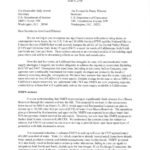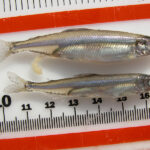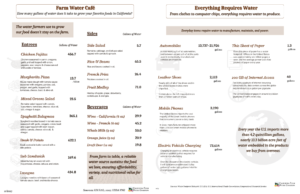By Justin Fredrickson, Environmental Policy Analyst, California Farm Bureau Federation
Asked on the Public Policy Institute of California water blog “how much water nature needs,” the response of Mike Sweeney, the executive director of the Nature Conservancy’s California Chapter, was an attention-getter.
At least it got mine.
“Research,” Sweeney said, “shows that taking more than 20 percent of a river’s natural flow at any given time can negatively impact the river’s function and ecosystem. Today,” he continued, “our rivers receive about half of their historic natural flow. Clearly, we have a problem.”
With 80 percent of available surface water off the table, clearly, we would have a problem!
Last year, there was lots of talk about agriculture using 80 percent of California’s water, but the record was finally set straight. The PPIC notes that average statewide water use “is roughly 50 percent environmental, 40 percent agricultural and 10 percent urban.”
In wet years, according to the California Water Plan, the same environment-ag-urban split becomes more like 60/30/10. And in dry years, it’s more of a 40/50/10 split.
Urban use fluctuates somewhat more across wet, average and dry years than this would suggest—but the real variability comes in environmental and agricultural use.
In wet years, the proportion of agricultural use drops significantly as environmental use rises significantly, while in dry years the proportion of agricultural use goes up as environmental use drops.
Mr. Sweeney’s view is that fish are shorted in all years, but drought years are where he feels the fish are shorted the worst. Variability is nature’s way, according to Mr. Sweeney, but human uses of water upset the kind of variability nature needs.
But if his proposition is that the environmental-ag-urban split should tilt, say, to 80/15/5, then truly, “We have a problem.”
The thing is, farms and cities cannot get by on 15 and 5 percent of our available water supply.
In light of several realities, it’s also problematic to say (as Mr. Sweeney does) that the water he believes nature “needs” should, furthermore, be precisely managed to come down at the times, the temperatures and in something like the volumes in which it would naturally have come down before California had farms, cities, upstream dams, etc.
Managing our system that way would be fairly disastrous: For example, it would mean water we presently capture in reservoirs constructed to catch and store supplies for the rest of the year would instead run to the sea in winter and spring, shrinking reservoirs to piddling mud puddles by midsummer.
And should Mother Nature happen to deal us multiple years of drought? Big problem.
Consider farmers’ experience of the last few years:
- Surface water deliveries to some users have been at or near zero for three years running—and have been scarcely better for others.
- Little water was stored or delivered in 2015 as prodigious quantities of water flowed to sea during storms—and yet, when El Niño brought rain and snow in 2016, storage and deliveries remained low.
- To preserve their livelihoods, sustain regional economies and continue to produce the food and fiber we all take for granted, farmers have been forced to rely on groundwater where it is available. But new groundwater laws may ultimately put more groundwater off-limits too.
As regulatory agencies try ever more draconian ways to save the fish, and as farms go increasingly without water, you have to wonder, “Just where does it all end?”
Unfortunately, the answer seems to be that more and more water will be reallocated to the environment, and less and less will be left over for farming—until, little by little, whole swaths of the choicest food-growing region on the planet are returned to the tumbleweeds.
If all that water produces even a handful of additional fish, Mr. Sweeney and other environmentalists might call that an even trade.
In the meantime, though, it doesn’t appear anyone ever sent the memo to ordinary people that the plan is simply to move California out of the business of growing food.
If ordinary people were told this, would they be actually on board with it?
While something tells me they wouldn’t, the reality is that ordinary people don’t know—and, by the time they do know, it may be too late.
Lest we lose all hope, let’s ask another question: Is there, perhaps, some way we can do better for the fish, and for farms and cities as well?
Must we really push California agriculture offshore in our iron determination to save the fish—while, along the way, damaging sensitive ecosystems in other, less environmentally conscious parts of the globe? Or, if we get creative enough, are there perhaps ways to help the fish and keep our agriculture as well?
Water is a scarce and precious resource. As California farmers know better than anyone, every drop counts.
Heaven knows, farmers are tremendously tough and resourceful. Many urban and suburban residents have cut their water use significantly, too.
Why, then, should environmental water uses be immune to the same scrutiny and efficiency standards applied to farms and cities?
While the clock ticks down, these questions become more urgent, critical and timely.
Guest blog shared courtesy of the California Farm Bureau Federation




